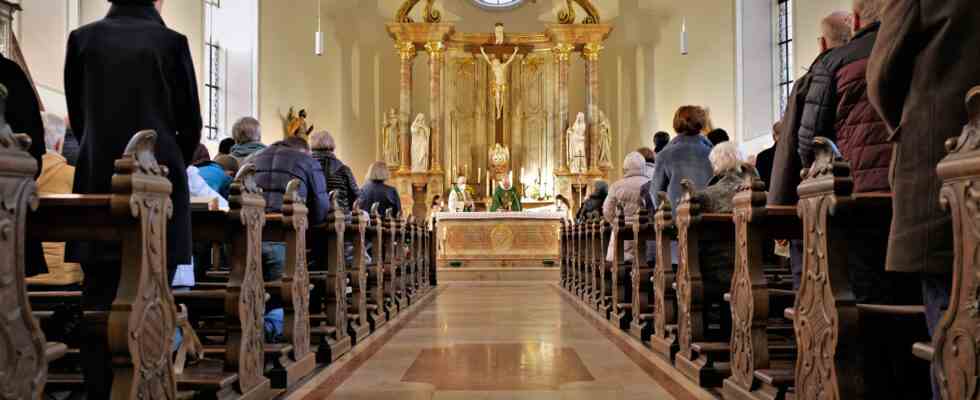Status: 11/20/2022 07:49 a.m
No outside lighting and a maximum room temperature of twelve degrees: the churches also have to save energy. In some places, services are also combined. This also has a positive side effect.
Sunbeams are reflected on the wooden pews of the Church of St. Josef in St. Ingbert in Saarland. The neo-Gothic church from the late 19th century looks even more pompous when deserted than with believers. Since the start of the heating season, no services have been held in the church. The diocese of Speyer had already published a recommendation for action in August, which encourages individual parishes to think about energy saving concepts. Among other things, it is recommended that churches should no longer be illuminated from the outside.
Part of the recommendation is to only heat one church per parish, with a maximum temperature of twelve degrees Celsius. All other churches should cool down to the extent that there is just no frost damage. The guide value is six degrees Celsius.
One instead of seven churches
A similar recommendation for action comes from the Diocese of Trier. A maximum of two churches are to be heated there. In individual communities, a rolling system is used so that the churches are heated alternately. Otherwise, it was feared, it would no longer be possible to reach all members of the community. Other parishes have moved services to the rectory or sacristy because heating there uses less energy. Worshipers are generally advised to dress warmly.
In the parish of St. Ingobertus in St. Ingbert, the specifications of the Speyer diocese led to the parish council and administrative board merging the services from seven churches, including the Josefskirche, into one – the Old Church of St. Engelbert in the pedestrian zone. It is the oldest and most accepted by the faithful in the parish, says Father Daniel Zamilski. In addition, it is centrally located and easy to reach from all sides.
Savings were overdue
However, what was born out of necessity is long overdue in many parishes. Revenue from church taxes has been declining for years. Even without the war in Ukraine and the energy shortage, the dioceses have imposed tough austerity measures on themselves. For example, the parish of St. Ingobertus in St. Ingbert passed a building concept this year, according to which only two churches will be used on Sundays in the near future. Many parish homes will also remain closed. In the medium term, the parish also wants to part with some buildings – even churches.
The economic reasons for combining services are obvious. Pastor Zamilski adds that there are also ecological reasons for saving. The church claims to preserve creation. This is one of the reasons why she cannot continue as before and must work more resource-efficiently in the future.
Fewer and fuller churches
Even if not everyone in the responsible councils is happy with the plans, everyone agrees that they are necessary. And how does all this go down with the believers, who may now have to travel significantly longer to go to church? The churchgoers are particularly understanding of the energy saving measures, observes Pastor Zamilski. The worshipers prefer to stay at home on weekdays. But that’s just a small group anyway. On Sundays and public holidays, on the other hand, the faithful would be happy to walk a few meters more to attend the service.
After all, Zamilski also sees a very decisive advantage in the merging of the services – and that may outweigh all the disadvantages. Namely that the churches that remain open are now fuller again. Communion is actually always celebrated in church, which means nothing other than community. This community is created again when on Sundays not small groups scattered in many churches, but again 200 people sing together in one church.

